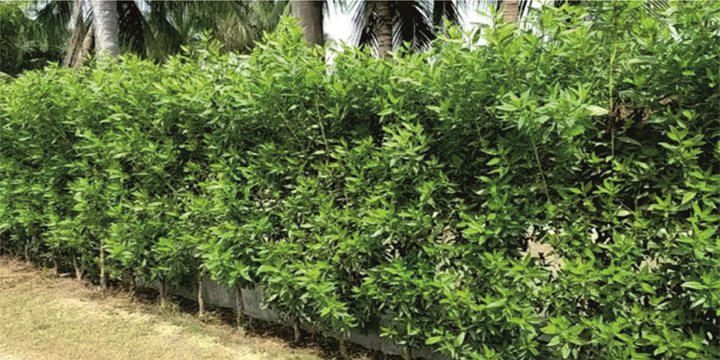Gujarat bans Conocarpus plants: Which other states stopped cultivating some trees
Context- The Gujarat government has banned the planting of ornamental Conocarpus trees “in forest or non-forest areas”, citing their “adverse impacts on environment and human health”.
Conocarpus, a fast-growing exotic mangrove species, had been a popular choice for increasing the green cover in Gujarat in recent years.
In a circular issued on Tuesday, the principal chief conservator of forests and head of forest force, S K Chaturvedi, emphasised the need to control the growth of “exotic species Conocarpus”.
Earlier, Telangana too had banned the plant species.
What happened in Gujarat?
- In a circular issued on Tuesday (September 26), the principal chief conservator of forests and head of forest force, S K Chaturvedi, emphasised the need to control the growth of “exotic species Conocarpus”.
- Research reports have highlighted adverse impacts/ disadvantages of this species on environment and human health. Trees of this species flower in winter and spread pollen in nearby areas.
- It is learnt that this is causing diseases like cold, cough, asthma, allergy etc. Roots of this species go deep inside the soil and develop extensively, damaging telecommunication lines, drainage lines and freshwater systems.
- Also, the leaves of Conocarpus are unpalatable to plant-eating animals.
What happened in Delhi with Vilayati Kikar?
- In 2018, the Delhi government agreed to clear the capital’s green lungs, the Central Ridge, of the Vilayati Kikar after years of appeals and court cases by activists.
- The Vilayati Kikar ( Prosopis juliflora) is not native to Delhi, and was brought to the city in the 1930s by the British. As the tree grows fast even in arid conditions, it can quickly increase the green cover of an area, and be used as firewood.
- However, it also kills off competition. Thus, within a decade, it had taken over the Ridge, killing the native trees like acacia, dhak, kadamb, amaltas, flame-of-the-forest, etc. Along with the trees disappeared the fauna — birds, butterflies, leopards, porcupines and jackals.
- The tree also depletes the water table of the area it is planted in.
- In 2016, the Madras High Court too passed an interim order for the removal of these trees as they were depleting the water table in areas already struggling for water.
- In Delhi, the canopy of the trees is being shortened, so it uses less water and allows sunlight to reach the ground. More native trees are being planted, so they can suppress the growth of the Kikar.
(Credits- IPBES)
What was Kerala’s experience with Eucalyptus?
- In Kerala’s case too, it was the British who introduced the Eucalyptus tree to Munnar, so its wood could be used as fuel in tea plantation boilers. The state forest department stopped the cultivation of acacia and eucalyptus in forest tracts in 2018.
- A study by The Wildlife Institute of India-Dehradun and Periyar Tiger Conservation Foundation in Kerala on man-animal conflict had found that foreign invasive plants had reduced the availability of fodder in forests, forcing animals to foray into settlements and farmlands.
- The quality of forest habitats had been lost due to the cultivation of alien plants such as acacia, mangium and eucalyptus in forest tracts for commercial purposes.
Syllabus- Prelims; Current Affairs
Source- Indian Express



